Wax carving advent calendars?Wax carving advent calendars?
Get started with sheet wax
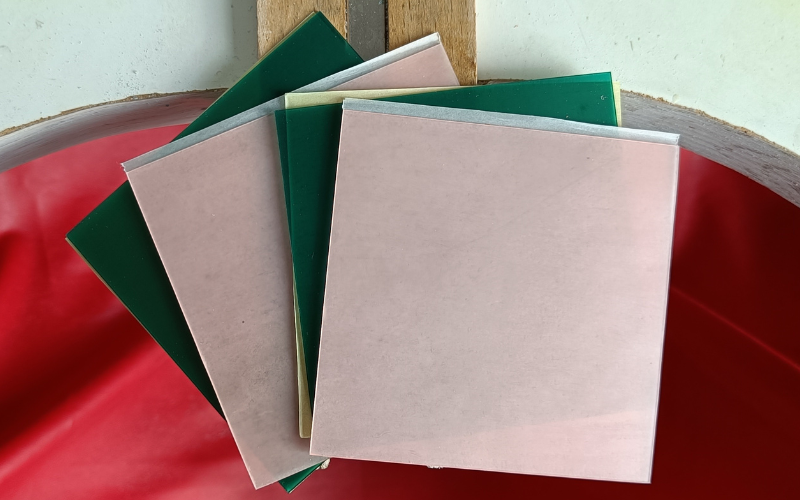
Work surface
Your bench is not the best place to work with sheet wax. Sheet is a dust magnet! No matter how well you think you cleaned your bench before you start, sheet will find every last bit of dust that remains. And since it’s soft and a little bit sticky the dust is hard to remove from sheet.
A regular table is much easier to work on. You can use a cutting mat as a base to protect your table from tool damage and left over sticky residue. But the sheet can still stick to the cutting mat.
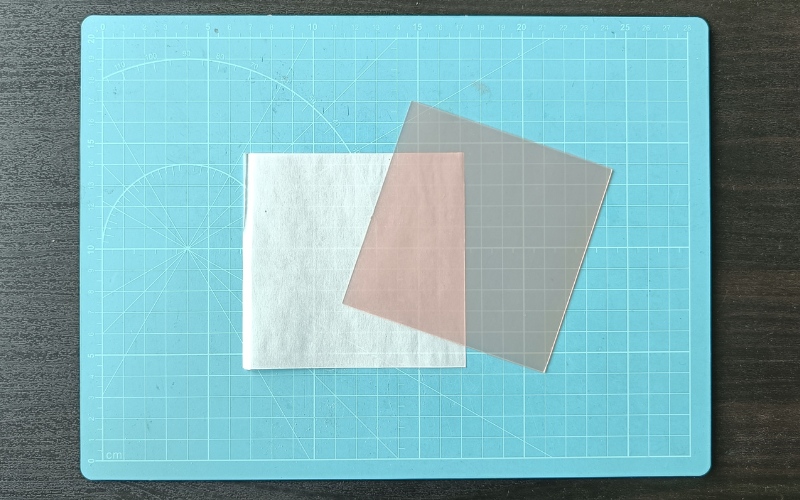
I like to work on the paper separating sheets that come with your sheet wax. In the box each sheet is separated by a piece of paper to prevent the sheets from sticking together. What better surface to work on than the paper that’s there for that specific purpose!
You can remove sheet wax much easier from that paper than from a cutting mat or just table surface. And if it still ends up sticking you can peel the paper back from your wax. This way your piece stays intact because you’re pulling on the paper instead of the wax.
Tools
A lot of tools you use with hard wax don't work with sheet wax. Sheet wax is too soft, fragile, and sticky for them: it clogs files and saw blades, sticks to your tools, and the force of a drill or ball burr will ruin the shape of sheet wax.
Some good alternatives for your usual tools:
Scissors and a Stanley knife are a good saw replacement. Get some decorative scissors and your sheet immediately has a fun edge!
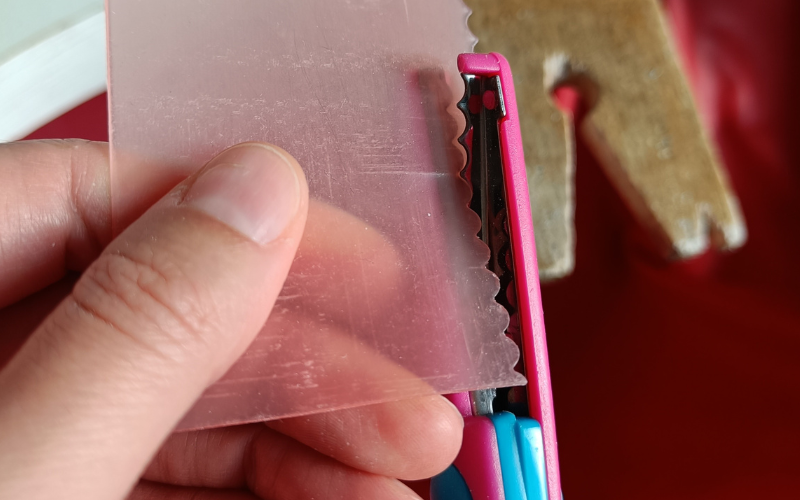
Your fingernails are a good file replacement. They're strong enough to remove and smooth edges, but soft enough to not damage the wax or bend it out of shape.
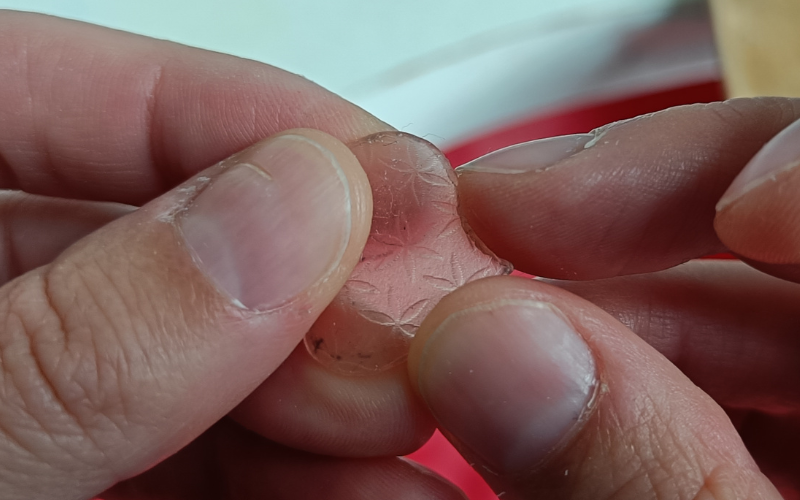
A hook carving tool or a strong needle are a good replacement for drills and burrs. Sheet is very thin so you don't really need to remove excess weight like with hard wax. But the hook carving tool is good for creating holes, texture and detail, and yes, removing wax from where you don't want it to be.
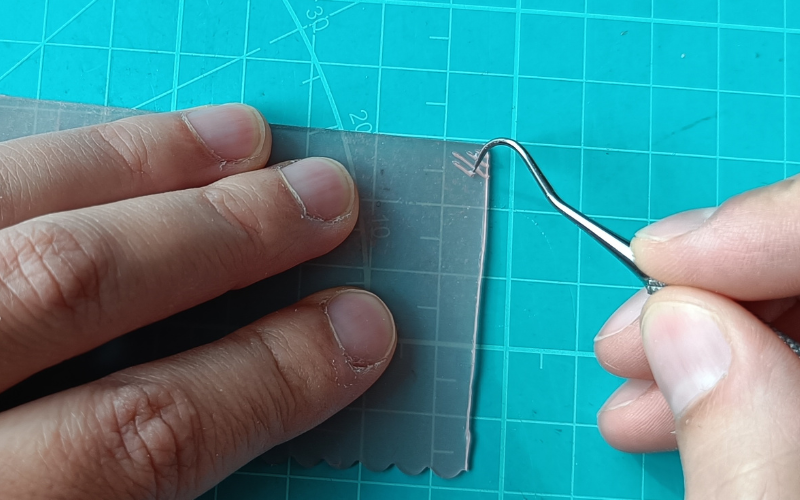
Pre heating
Sheet wax is flexible by nature. You can move it straight from the box. But when the outside temperature is cold, sheet can become a bit harder to move. I never have a problem with sheet wax in the summer when it’s nice and warm. But in the winter you can preheat a sheet before working with it.
You have to make sure not to overheat it. If it gets too warm it loses its flat sheet shape and gets too sticky. It’s hard to remove the wax from in between your tools when that happens!
My preferred method of preheating is to use my body temperature. I hold the wax between my hands to gently warm it up. It really doesn’t need much to work with it easily.
There are loads of other ways to preheat sheet. You can leave a piece on top of a radiator that is on. You can use a hairdryer on it. Place sheet in a bowl of warm water or on top of a hot water bottle. Try out different methods and see which one works best for you. And always practice on a small piece of sheet first to find your perfect temperature.
Melting
Melting pieces of sheet wax together is something you definitely want to try a few times. Because it’s soft it melts very quickly. But because of that it also loses its shape quickly. The chances of ending up with a blob of wax where you melt 2 pieces together, or the melted part breaking off are very big.
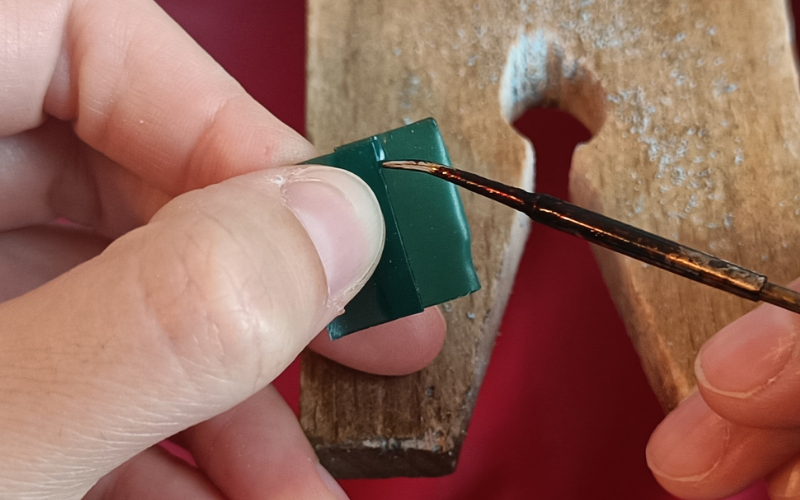
You want to use a very low heat setting on your wax pen when you do this. It melts slower and you have more control that way. When your 2 pieces are together you have to let it rest. It’s very tempting to touch the part you just melted together but chances are that you break the melted part that way.
Don’t touch it for at least a minute and let the sheet cool down. By letting it rest the melted part can get its strength back and it won’t break so easily.
Experiment
Sheet wax is a very playful and intuitive wax. The best thing you can do when you're new to it is to experiment. Take one of the sheets, cut it into a few pieces and try to do different things with the pieces. When you have it in your hands and have tested the flexibility of it, you just know what you want to do with it.
Just follow your first instinct and see what happens. Do you want to make something with curves? Precise folds? Layer the sheet? Texture? Cut outs? A combination of different things? It's all possible! Sheet moves very quickly and easily. You can have a handful of different samples in 10 minutes.
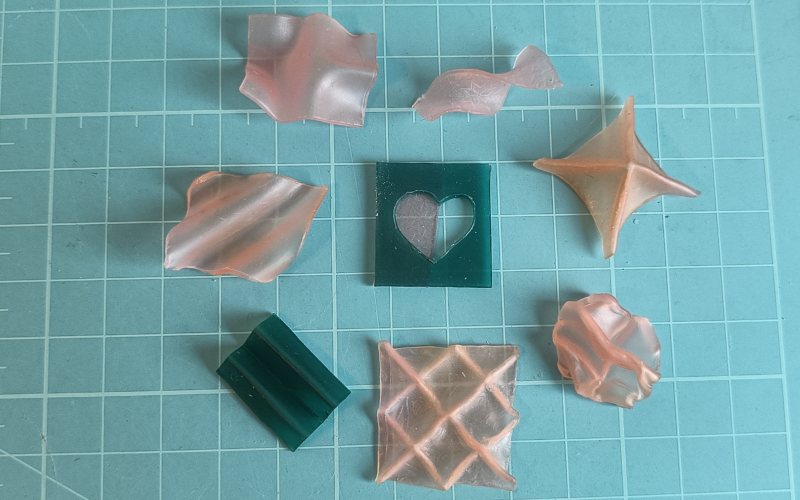
And you might surprise yourself. The way you find yourself drawn to moving the sheet, might not be what you set out to make. You find what you like to do when you're experimenting. And now that you know what that is, you can make your real pieces!
Comment below and let me know if these tips were helpful!